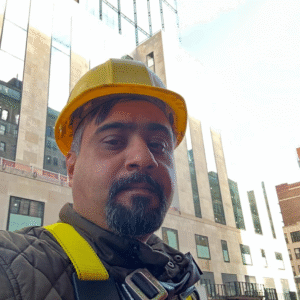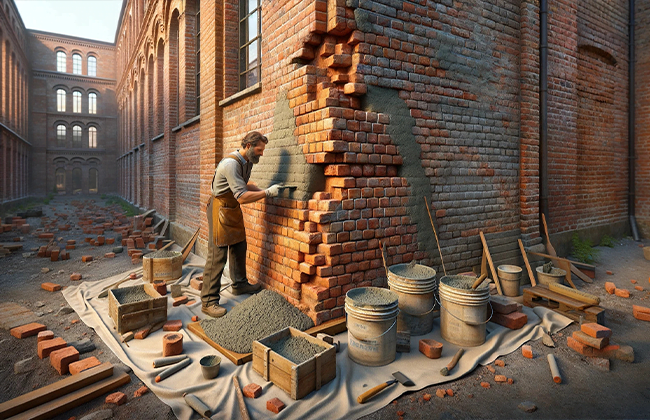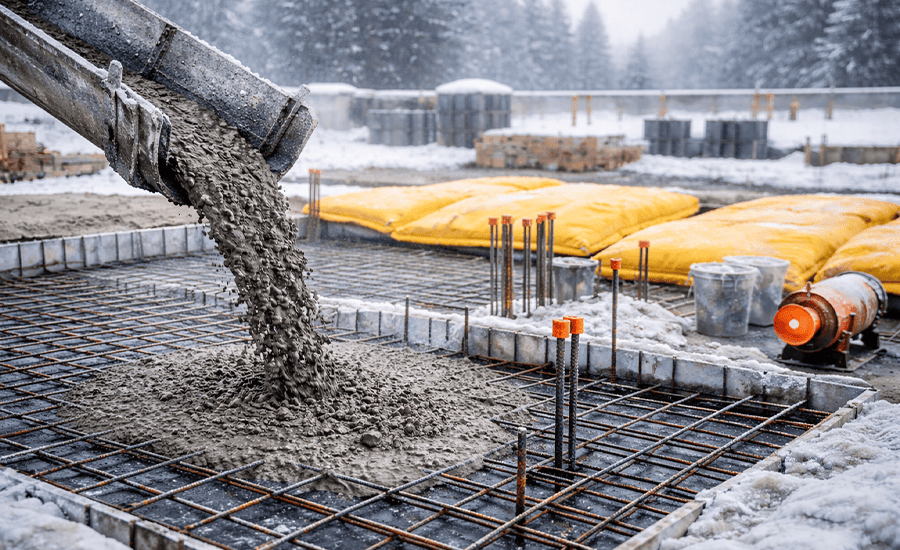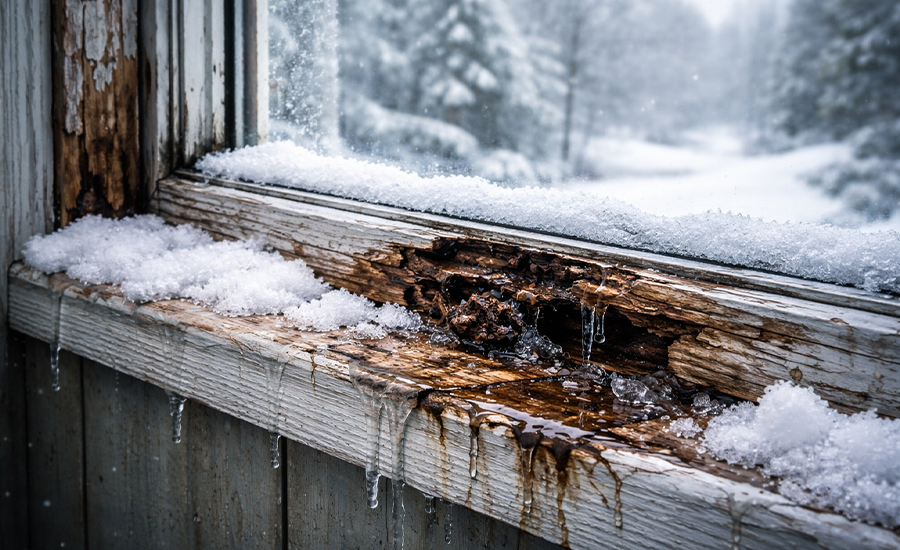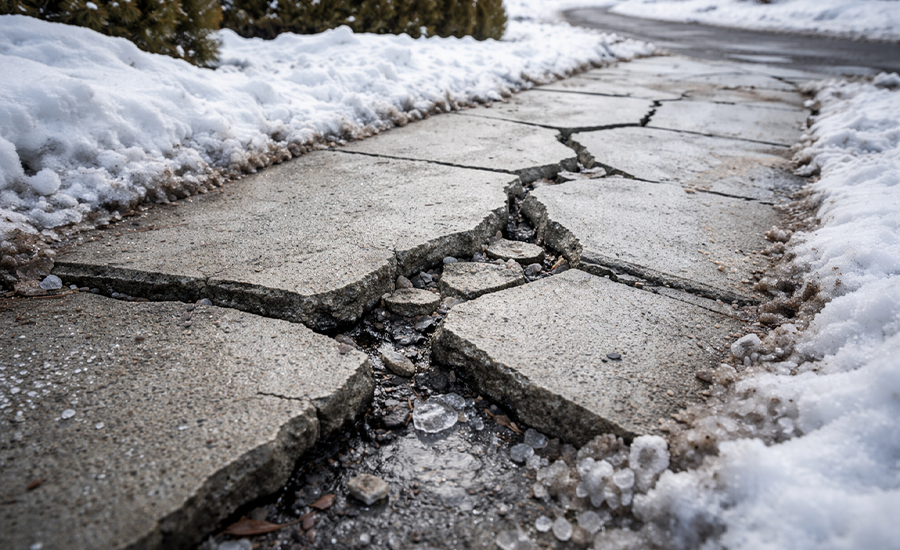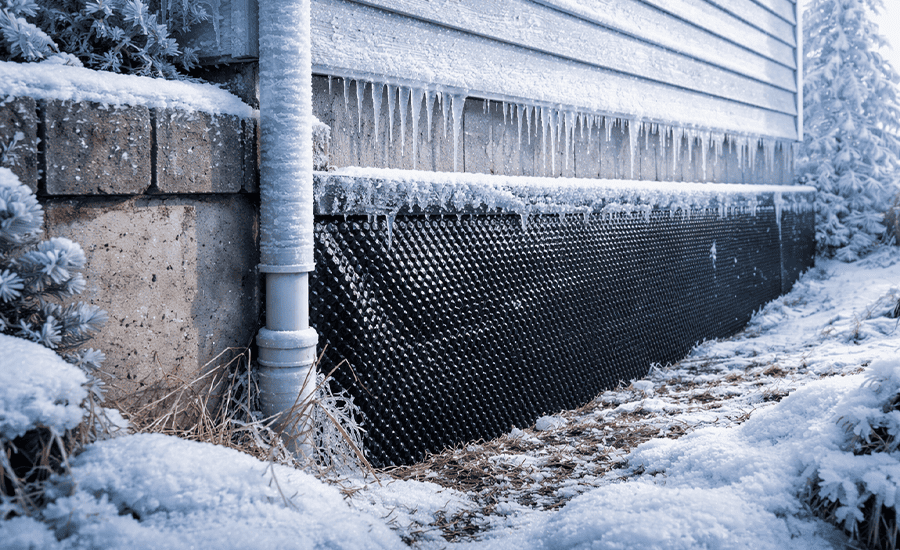Understanding how to repair brick mortar is essential for maintaining the structural integrity and aesthetic appeal of your brick constructions. Mortar, the binding element between bricks, is not just a filler but a crucial component for strength and durability. Over time, exposure to elements and physical wear can cause mortar to deteriorate, leading to potential structural issues. This guide aims to equip you with the knowledge and techniques necessary for effective brick mortar repair, ensuring your brick structures remain robust and visually appealing for years to come.
Understanding Brick Mortar and Its Importance
Explores the critical role of mortar in ensuring structural integrity and weather resistance in brick structures, and emphasizes why understanding its function is crucial for proper repair and maintenance.
Why Mortar Matters in Brickwork
Mortar serves as the fundamental bonding agent in brickwork, playing a critical role in both the structural integrity and weather resistance of brick constructions. It’s more than just a filler; it’s a vital component that holds bricks together, distributing loads evenly and providing stability. However, mortar is susceptible to deterioration over time, often due to weather exposure and physical damage. Its degradation can lead to serious issues like water infiltration and loss of structural integrity. Understanding the crucial role of mortar is essential for any repair work, as it ensures that the restoration process not only enhances the aesthetic appeal but also reinstates the structural soundness of the brickwork.
Types of Mortar
There are various types of mortar, each suited for different repair needs. The most common types include:
- Type N: A general-purpose mortar with good flexibility and medium strength, ideal for exterior walls where moderate strength is sufficient.
- Type S: Offers higher strength with better bonding properties, suitable for areas where the wall might be subjected to higher pressures.
- Type M: The strongest option, used for heavy loads and below-grade applications like foundations.
- Type O: A low-strength mortar used for interior or non-load-bearing applications.
Understanding your building’s requirements and existing mortar type is crucial in selecting the right replacement mix. A mismatch can lead to further damage and compromised structural integrity.
Assessing Mortar Damage
Focuses on identifying signs of damage in the mortar, like cracking or crumbling, and how to evaluate the extent of this damage to determine the appropriate repair approach.
Identifying the Need for Repair
Regular inspection of brickwork can reveal early signs of mortar deterioration. Key indicators include:
- Crumbling or powdered mortar.
- Visible cracks.
- Mortar erosion, leaving gaps between bricks.
- Moisture penetration in the interior walls.
Addressing these issues promptly can prevent more significant and costly structural problems in the future.
Evaluating the Extent of Damage
The extent of the damage determines the approach to repair. Small, localized damage can typically be managed as a DIY project. However, if the damage is widespread or the structure is old and fragile, it may be prudent to seek professional assistance.
Tools and Materials: Essentials for Repairing Brick Mortar
Details the essential tools and materials required for mortar repair, including items like a chisel, hammer, trowel, and the right kind of mortar mix.
Essential Tools
For a successful repair job, you’ll need:
- Chisel and hammer for removing old mortar.
- Trowel for applying new mortar.
- Mixing bucket for preparing the mortar mix.
- Stiff brush for cleaning out joints.
- Safety glasses and gloves for protection.
Choosing the Right Mortar Mix
Select a mortar mix that matches the existing mortar in color, composition, and strength. You can take a small sample of the old mortar to a professional for analysis or match it at a home improvement store. It’s vital to ensure compatibility to maintain the structural integrity and appearance of the brickwork.

Preparing for Brick Mortar Repair
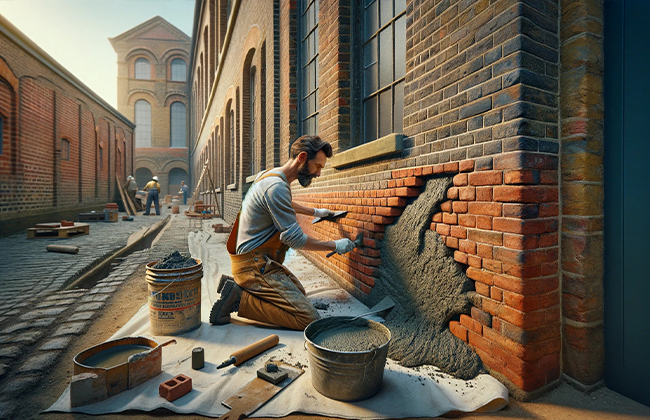
Describes the preparatory steps for repairing mortar, including the removal of old, damaged mortar and cleaning the area to ensure a solid foundation for the new mortar.
Removing Old Mortar
Carefully chisel out the damaged mortar without harming the bricks. The goal is to remove enough depth to allow the new mortar to bond effectively, typically about 1/2 to 3/4 inch deep.
Cleaning the Area
Thoroughly clean the area of all debris, dust, and loose particles. A clean surface ensures a strong bond between the new mortar and brick.
Mixing and Applying New Mortar
Provides guidance on how to mix new mortar to the correct consistency and the techniques for applying it effectively to ensure strong and even joints.
Mixing Mortar to the Right Consistency
Mix the mortar to a firm, workable consistency – not too dry or overly wet. It should hold its shape when pressed but still be malleable.
Applying Mortar
Carefully apply the mortar into the joints using a trowel, pressing it firmly to ensure no air pockets are left. The mortar should be level with the brick surface for a uniform appearance.
Finishing and Curing
Discusses the finishing touches for mortar repair, like shaping the joints, as well as the critical curing process to ensure the longevity and effectiveness of the repair.
Tooling the Joints
Once the mortar starts to set, shape the joints for a neat, finished look. Various joint profiles can be created depending on the desired aesthetic.
Curing Process
Allow the mortar to cure properly. Protect it from extreme weather conditions during this period. Curing time may vary based on the type of mortar and environmental factors.
Maintenance and Prevention Post Brick Mortar Repair
Offers advice on regular maintenance practices and preventive measures to protect mortar from future damage, thereby extending the lifespan of the brickwork.
Regular Inspection
Conduct periodic inspections of the mortar to identify early signs of wear or damage. Early detection can prevent major repairs in the future.
Preventive Measures
Implement measures like waterproofing or controlling vegetation growth near walls to extend the life of brick mortar. Avoid directing water downspouts directly at brick walls, and consider applying a breathable sealant for added protection.
Conclusion:
In conclusion, learning how to repair brick mortar is an invaluable skill for homeowners and DIY enthusiasts. By understanding the importance of mortar, selecting the right materials, and applying meticulous repair techniques, you can ensure the longevity and safety of your brickwork. Regular maintenance and preventive measures further enhance the durability of your repairs. Embrace this guide as a tool to restore and preserve the beauty and integrity of your brick structures, ensuring they stand strong against the test of time and elements.
FAQs:
Q1: How do I know when to repair brick mortar?
A1: The need to repair brick mortar becomes evident when you notice signs like cracking, crumbling, or missing sections. Early detection and repair can prevent more serious structural issues.
Q2: Can I repair brick mortar myself, or should I hire a professional?
A2: You can repair brick mortar yourself if the damage is minor and localized. For extensive or structural damage, it’s advisable to consult a professional for a durable and safe repair.
Q3: What are the key steps in repairing brick mortar?
A3: Key steps include removing old, damaged mortar, choosing the right mortar mix, applying the new mortar carefully, and allowing adequate time for curing.
Q4: How long does it take to repair brick mortar?
A4: The time to repair brick mortar varies depending on the extent of damage. Small repairs can be completed in a few hours, but larger areas may require more time for preparation and curing.
Q5: How often should brick mortar be inspected and maintained?
A5: Regular inspection of brick mortar, at least annually, is recommended to identify any early signs of wear or damage, ensuring timely repairs and maintenance.


